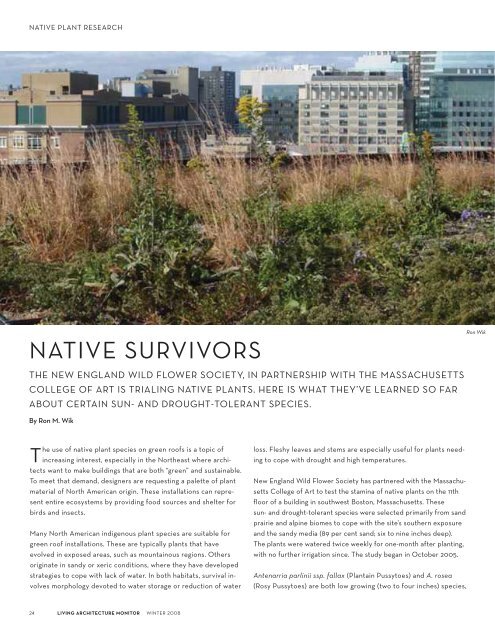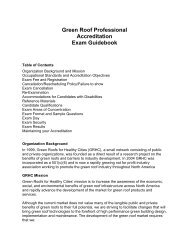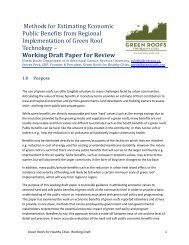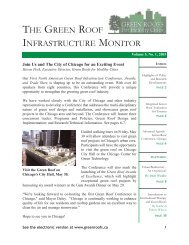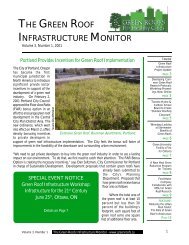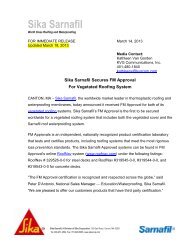Living Architecture Monitor - Green Roofs for Healthy Cities
Living Architecture Monitor - Green Roofs for Healthy Cities
Living Architecture Monitor - Green Roofs for Healthy Cities
Create successful ePaper yourself
Turn your PDF publications into a flip-book with our unique Google optimized e-Paper software.
NATIVEPLANTRESEARCH<br />
NATIVESURVIVORS<br />
Ron Wik<br />
THENEWENGLANDWILDFLOWERSOCIETYINPARTNERSHIPWITHTHEMASSACHUSETTS<br />
COLLEGEOFARTISTRIALINGNATIVEPLANTSHEREISWHATTHEY’VELEARNEDSOFAR<br />
ABOUTCERTAINSUN-ANDDROUGHT-TOLERANTSPECIES<br />
By Ron M. Wik<br />
The use of native plant species on green roofs is a topic of<br />
increasing interest, especially in the Northeast where architects<br />
want to make buildings that are both “green” and sustainable.<br />
To meet that demand, designers are requesting a palette of plant<br />
material of North American origin. These installations can represent<br />
entire ecosystems by providing food sources and shelter <strong>for</strong><br />
birds and insects.<br />
Many North American indigenous plant species are suitable <strong>for</strong><br />
green roof installations. These are typically plants that have<br />
evolved in exposed areas, such as mountainous regions. Others<br />
originate in sandy or xeric conditions, where they have developed<br />
strategies to cope with lack of water. In both habitats, survival involves<br />
morphology devoted to water storage or reduction of water<br />
loss. Fleshy leaves and stems are especially useful <strong>for</strong> plants needing<br />
to cope with drought and high temperatures.<br />
New England Wild Flower Society has partnered with the Massachusetts<br />
College of Art to test the stamina of native plants on the 11th<br />
floor of a building in southwest Boston, Massachusetts. These<br />
sun- and drought-tolerant species were selected primarily from sand<br />
prairie and alpine biomes to cope with the site’s southern exposure<br />
and the sandy media (89 per cent sand; six to nine inches deep).<br />
The plants were watered twice weekly <strong>for</strong> one-month after planting,<br />
with no further irrigation since. The study began in October 2005.<br />
Antenarria parlinii ssp. fallax (Plantain Pussytoes) and A. rosea<br />
(Rosy Pussytoes) are both low growing (two to four inches) species,<br />
<br />
LIVING ARCHITECTURE MONITOR<br />
WINTER


